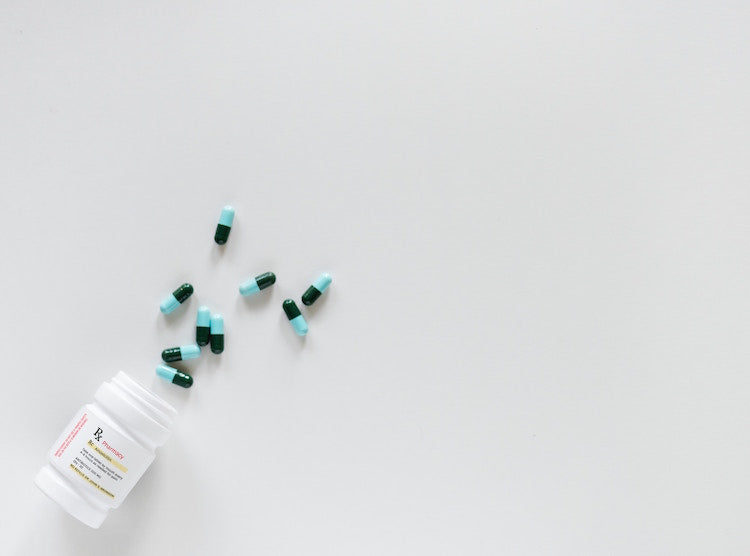Type 2 diabetes can be controlled by high-strength probiotics (those containing > 10 billion CFU per dose) providing they contain clinically-studied strains for this purpose.
The object is to rebalance a diabetic person’s intestinal flora which has changed from that of a non-diabetic person.
A diabetic's flora contains a disproportionate amount of Bacteroides bacteria compared to Lactobacillus bacteria, and this contributes to decreased insulin sensitivity (1).
Lactobacillus Probiotics for Diabetes
Scientists are divided on the mechanism of action used by Lactobacillus probiotics to maintain insulin sensitivity, but it may be connected with the following properties of performing probiotic Lactobacillus strains:
- They increase absorption of key trace minerals like chromium and vanadium required for insulin activity.
- They reduce glucose by converting it to lactic acid in the intestinal tract – this moderates glycemic foods.
- They foster bowel regularity and healthy digestion that expedites waste elimination, always important.
- They reduce the inflammation associated with diabetes.
- They compete with undesirable bowel flora that may have opposite properties to those above.
Some combination of the above five properties, or something else not considered here, is operating.
The human gastro-intestinal tract is one of the most complex ecosystems known, featuring tens of trillions of microorganisms interacting with each other and with us.
More than half of these have not been characterised (named) or studied. So it is not surprising that something high-powered is required to correct an imbalance.
To restore insulin sensitivity, we need to consume a probiotic product that contains effective strains at meaningful concentrations (measured in CFU or colony-forming units).
One particular strain of Lactobacillus acidophilus, called LA-1 or NCFM, has been clinically tested in a group of 45 males with type 2 diabetes and found to maintain insulin sensitivity versus control subjects with reduced sensitivity (2).
This particular LA-1 strain is a colonising strain and is able to stick to the intestinal wall and reproduce; adhesion is confirmed by its ability to adhere to two different human intestinal cell lines called HT-29 and Caco-2 (3).
Recently, a 24 month, double-blind, placebo-controlled Finnish study on 256 women showed a significant reduction in gestational diabetes and child obesity with those on probiotics versus controls.
The rate of gestational diabetes was 13% for the probiotic group and 34% for the control group (4).
What About Synbiotics for Diabetes?
In addition to using Lactobacillus-containing probiotics, there seems to be value in using products that combine effective Lactobacillus strains with Bifidobacterium strains.
These “Bifido” comprise another large family of probiotics and, unlike Lactobacillus strains that live mostly in the small intestine, the Bifido prefer the large intestine.
Probiotics that combine Bifidobacteria with Lactobacillus strains may have synergistic advantages in controlling insulin resistance.
A particularly important strain of Bifidobacterium lactis designated as BL-34 or BL-04 has been studied in terms of its ability to reduce an inflammatory cytokine called IL-12 (5).
Diabetic patients can experience high blood levels of IL-12, resulting in serious internal inflammation. Reducing this inflammation is complimentary to the reduction of insulin sensitivity by Lactobacillus acidophilus LA-1.
Another Bifidobacterium lactis strain, Bi-07, further reduces inflammation by encouraging proliferation of a non-inflammatory cytokine called IL-10; a combination of these two Bifidobacterium strains has powerful anti-inflammatory action.
Probiotics and Diabetes: 2018 Study
A study from Saudi Arabia published in autumn 2018 again highlighted the benefits of probiotic supplementation for diabetics – particularly those newly diagnosed with type 2.
A six-month protocol of multi-strain probiotics, taken twice daily, helped to reduce both insulin resistance and gut inflammation. (The total CFU consumed per day was 2.5 billion.)
There was a 38% reduction in circulating insulin among the probiotic group, while improvements in triglyceride levels, total cholesterol and HDL cholesterol were observed.
Furthermore, the diabetics saw a massive decrease (70%) in circulating levels of endotoxin over the six-month period. Bacterial endotoxins, of course, are potent inducers of systemic inflammation.
The results led the study’s lead author, Shaun Sabico, MD, to conclude that multi-strain probiotics could be “beneficial for the prevention of diabetes and as an alternative therapy for people with diabetes, thereby reducing healthcare costs.”
One can only imagine that combining powerful multi-strain probiotics with a suitable anti-diabetic low-carbohydrate diet would potentiate the effects.
How Prebiotics Help Probiotics
Prebiotics are food for probiotics. Most prebiotics are not digested by the human body, the best are composed of unique forms of soluble fibre and are digested primarily by probiotics.
Given the multi-trillion microbial menagerie present in our gut, it’s not hard to understand why probiotics need some help to get colonising fast.
The gut health products we stand behind are made by Progurt. Progurt probiotic sachets contain an unprecedented megadose of one trillion beneficial bacteria, from human-derived bacterial isolates.
Because Progurt’s strains were isolated from healthy humans, they are familiar with the ecosystem of the human gut and are thus optimised to colonise better than the bovine- or soil-derived probiotics common in the market today.
The fact that a single Progurt sachet contains as many colony-forming units as a month’s supply of most products tells you all you need to know.
The volume of bacteria living in the human gut is such that probiotics containing 20 or 30 billion CFU will never give reliable colonisation. This is the view of Progurt, and it is one we wholeheartedly share.
In addition to a probiotic, Progurt offer a prebiotic. Made from all-natural ingredients, this probiotic-stimulating syrup helps to nourish the good bacteria in your gut and promote a healthy microbiome.
Progurt Prebiotic contains three well-researched prebiotic fibres and is well-tolerated by the human digestive system.
Conclusion
Diabetes is a complex disease. The benefits of taking a good probiotic are evidenced by the aforementioned trials, and continue to be explored.
A diabetic patient should work with a doctor to integrate alternative methods with their prescription medications and recommended diet.
We have addressed mainly type 2 diabetes here, but type 1 can also benefit from probiotics. The goal would be to either reduce the dosages of the meds being used and/or to improve their effectiveness.
If you are interested in learning more about preventing or managing diabetes through diet and lifestyle, our blog 'Diabetic Diet Sheet' is a great resource. Published in June 2018, it contains information about the most recent studies.
References
- Larsen, N., F.K. Vogensen, et al (2010), “ Gut microbiota in human adults with type 2 diabetes differs from non-diabetic adults,” PLoS One, 5(2): e 9085.
- Andreasen, AS, et al (2010) “Effects of Lactobacillus acidophilus NCFM [LA-1] on insulin sensitivity and systemic inflammatory response in human subjects,” Br J Nutr, Dec; 104 (12): 1831-8.
- Green, J.D., and Klaenhammer, T.R. (1994), “Factors involved in adherence of lactobacilli to human caco-2 cells,” Appl. Environ. Microbiol. 60: 4487-4494.
- Luoto, R. et al (2010) Br J Nutr, 1-8.
- Foligne, B., et al (2007) “Correlation between in vivo and in vitro immunomodulation properties of lactic bacteria,” W J Gastroenterology. 13(2): 236-243.
- Bioscci. Biotech. Biochem. 58. 1364-1369. 1994.
NOTE: Finding an appropriate probiotic requires paying attention to the labelling on probiotic products and to support information provided in the scientific literature. Since probiotics are dietary supplements, not drugs, the FDA does not allow scientific studies showing healing or curative responses to be published on the label or in commercial literature provided by supplement manufacturers. The statements herein are intended for educational purposes only. The statements in this article have not been evaluated by the Food and Drug Administration. The products mentioned are not intended to diagnose, treat, cure or prevent any disease.




























Leave a comment